Why does the VR offline experience shop corpse in China, only 20% profit, 80% at the loss?
Why is Japan's VR offline experience store able to enter the bucket daily? Just because of "intentions"?
The popularity of traditional arcade games really cannot be copied to the VR experience?
Do you really want to make money? Let's start with an arcade...
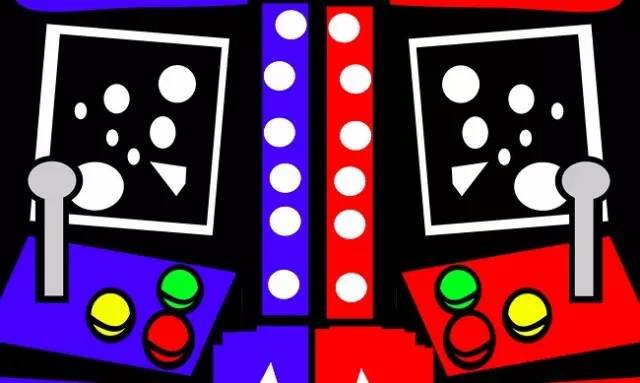
The popularity of traditional arcades really cannot be copied to the VR experience?
You can't make money, you look like you're in a circle; I don't play well and I lose my purpose.
How can I do?
Japan's VR offline experience hall VR Zone, with an average daily average of tens of thousands of yuan (converted into renminbi), made domestic VR experience shops more open-eyed.
It can be said that our powerful neighbor has already begun to play the brakes, and we are still struggling with the tractor, always that the technology is not mature enough...
It is not really Japan that "does care" and "seriously."
But Japan's VR model, in fact, is the essence of its traditional arcade business system.
What kind of commercial form is this?
What exactly does a VR experience learn from an arcade?
In order to solve this problem, the experts took root in this issue, asked the bottom line and followed it up, trying to clarify the above doubts.
We touched the ancestor of the VR experience, the arcade machine, in the most ground-breaking manner, and tried to point the way for the future.
This is a research report worth 100,000. However, impetuous you may not have the patience to read and think carefully. All of this is why the same starting point, you still can not make money.
One, why do this research
1. Investigate and verify the matching degree of VR experience hall with street electromechanical play city
2. Based on the game types included in the arcade hall and video game city, it is a theoretical basis for the game content of the stand-alone game experience hall and the introduction and expansion of follow-up models.
3. Investigate the operational ideas of the arcade hall and video game city, and provide experience for the experience operation of the experience hall
Second, what is the logic behind the arcade?
For the old players in China, the arcade may be a wave of childhood memories, the King of Fighters and the Three Kingdoms War. Most of them just witnessed the arcade era of the arcade machine, and the history of the arcade may be truly familiar to people. Not much.
A brief history of arcade games:
In 1971, the world's first arcade was born in the computer lab in the United States.
It rose from 1978 to 1985 and reached its climax in 1982;
In 1983, Americans produced high-tech works such as Dragon Lair on arcades, but from 1985 onwards, only the Japanese were left to make new appearances.
In 1986, Sega launched "Out Run", which opened the history of the type of frame racing game;
In 1987, Taitung issued the Double Dragon, which became the mountain of the horizontal scroll type;
In 1987, Capcom launched Street Fighter, forming the initial concept of a fighting game.
At this time, the global arcade market slowed down under the influence of Atari. Until 1991, Capcom's Street Fighter 2 emerged and led the entire arcade industry into the revival era.
With the advent of the Internet era, the market's short-term rebound gradually declined after 2000. According to statistics, the US arcade industry’s revenue in 2004 was US$860 million. If inflation is ignored, it is less than one-tenth of the Golden Age.
In the end, network technology has scrubbed the world arcade market, except that Japan’s arcade games are still advancing with the times and continue to grow.
Some of the key things about Japanese arcade games are:
In 2002, Sega's arcade card game (WCCF), the “exchange card†game mechanism was the key to the survival of Japanese arcades. At the same time, it is also the initial performance of the mobile card games we often play today. form.
Subsequently, Japanese arcade vendors designed a large number of networked arcade games based on this: football, horse racing, beetles, three kingdoms, battle cards, simulated driving, mech battles, music rhythm... until now “ship mother†.
Later, in the hands of DeNA, Gree, and Mixi, they developed a category of "moving card games." Introduced into smart machines and page games, it became what we now call "card game."
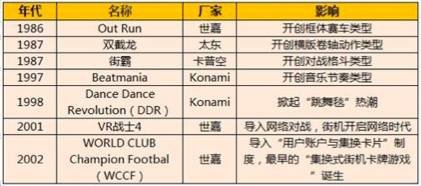
Japanese arcade status
Let's talk about distribution. Today's Japanese arcade is generally located in a specialized entertainment center, which is often referred to as ゲ`セン. There are usually several floors, such as Taito Station in Tokyo. The first floor is shooting and core games. The first floor is mainly to grasp the doll machine, and the high-end big-headed machine is placed at the highest level.
There are also some underground arcades at the exit of underground commercial streets that are scattered with several old 90s arcades.
In addition, arcade halls are usually located in prime locations in cities (such as Akihabara in Tokyo) and consume a lot of electricity.
According to the statistics of Japan's Entertainment Industry Association (JAMMA), the number of all-Japan arcade halls reached 15,612 in 2015, of which only 138 stores in the Taitou arcade section of SquareEnix are located in Japan.
As of March 2016, the annual revenue of the Taito arcade office reached US$360 million, an increase of 9.7% year-on-year. The SE entertainment business had sales of 33 billion yen in March 2017 and operating profits of 3.7 billion yen.
In addition, Sega’s latest financial report shows that in March 2017, sales of the AM machine sector reached 37.4 billion yen, which was comparable to the same period of the previous year, thanks to arcade games such as “Fleet Collectionâ€, “War of the Three Kingdoms†and “Initial D ARCADE STAGE Zeroâ€. In 26%, operating profit also turned a profit, reaching 3.3 billion yen.
The Karp arcade business also performed very well last year. In addition to the addition of an arcade room in Yamaguchi Prefecture and a series of special codes to attract players of even more ages to visit the store, the sales of entertainment facilities in March 2017 reached 7 billion. 69 million yen, an increase of 7.5% from the previous year, and operating profit of 6.11 billion yen, an increase of 33.1%.
However, the rapid rise of mobile games and online games has also inevitably affected the scale of Japan’s game arcades.
According to the report of the Japan Productivity Association of public interest corporations in 2014, the market size of the Japanese street computer room was 390 billion yen, which was nearly 50% lower than the figure of 711 billion yen in 2007 during the peak period.
However, with the recent introduction of new arcade games by Japanese game companies and the renewed updating of relevant laws and regulations in Japan last year, underage children can enter the arcade hall under the guidance of guardians. This corresponds to the performance of major game companies last year. Performance is good, and the Japanese arcade industry has begun to bottom out.
In addition to the game, according to the latest summary of the ettamu popular arcade game rankings, the recent hot Japanese arcade has these:
1. Battle Fighting
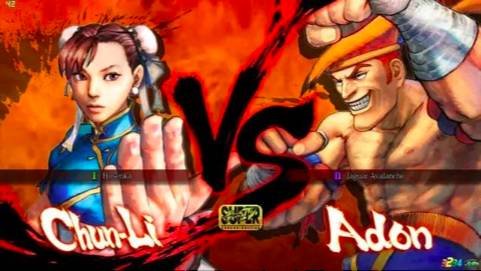
2. Shooting
3.Dot Eat
4. Horizontal scroll action
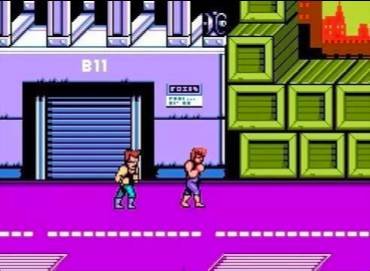
5. Racing class
6. Board games
7. Music
8. Cards
9.VR class
The reason why arcade is prosperous in Japan
In fact, at the end of 1995, the Japanese arcade industry was once slumped under the influence of Atari shocks, a decline in the popularity of video games, and a series of factors that deviated from the general user direction.
In 1998, the old factory Data East withdrew from the arcade industry.
In 2000, Caijing, which makes shooting games, withdrew from the arcade industry.
In 2001, SNK, which had KOF, went bankrupt. In 2003, Capcom stopped the traditional arcade business.
On the other hand, a large number of business downturns in the downstream arcades have greatly reduced their profits. There are not a few arcade rooms that are closed, but it is necessary to know that the number of arcade halls is directly related to the sales of machines and games. day.
Under the impact of various objective factors, the arcade industry in China and North America has come to an end. In Japan, arcade game developers chose to change.
They personally went off to run the arcade hall and opened the entire industry up and down. The developers personally took on the risks of the market and took advantage of the profits of direct coins.
Walking on the streets of Akihabara, you will find that the arcade halls all over the line of sight are almost all hitting the "Sega," "Tai-dong," or "Nammeng" signs.
Of course, this will not affect the introduction of other arcade machine manufacturers' excellent game consoles in their hangars, but if you want to play the "Arcade Collection" arcade version, the Sega Club will naturally be able to find more units than the Nanmeng Land. More.
After the game developer personally put into operation, the structure of the arcade hall, the types of games, and the stratification of the customer base are more accurate than the overseas arcade halls, and the customer hierarchy is even more pronounced.
Another important reason that cannot be ignored is that the Japanese people usually use large-value coins of 100 yen and 500 yen in large quantities. This means that the average per-paid price of the Japanese arcade industry is much higher than that of other countries and can support a large number of coins. Arcades, doll-catchers, and beauty cameras as payment means.
In fact, almost all arcades in Japan are paid for directly with 100 yen. This eliminates the need for a game-changing token, which greatly reduces the barriers for users of non-arcade games in general and provides a large number of non-arcade users. The possibility of converting into an arcade room customer.
The more special currency structure determines the willingness and ability of Japanese to pay on arcades, which is much higher than that of ordinary people in China and the United States.
The commercial system from Japan's arcade has been a set of operating methods behind it. After the rise of VR, it has been applied directly and brought about the prosperity of VR.
It is not so much that Japan is more attentive in its experience under the VR line than to say that the mechanism behind this set is more practical. It is this mechanism that forces the VR experience to succeed and cannot fail.
Looking at the Chinese arcade, what do we see again?
Third, China's arcade market status and policy
Have to start with the "ban."
In June 2000, the State Council reviewed and approved the "Opinions on the Special Administration of Electronic Game Venues," requiring that domestic-oriented production and sales of video game equipment and its accessories and accessories cease immediately.
Subsequent consoles, video game consoles (also known as game consoles) and large game arcades have been banned. Since then, video game consoles have disappeared in China’s legal market. Domestic game console companies have turned to online games and mobile games, while foreign-branded game consoles have been selling mostly in the parallel market.
In 2014, the General Office of the State Council in the Shanghai Free Trade Zone allowed foreign companies to engage in the production and sale of game entertainment equipment. China has lifted the ban on game consoles for 13 years and finally ushered in new life.
However, the whole set of operational logic behind the arcade, China, can be far behind.
When VR emerged as a new thing, although the Chinese market has made great efforts to elaborate on it, the level of operations has been greatly reduced.
The end result is only 20% profit.
What arcade models are worth exploring in the end?
Fourth, arcade operation mode
Arcades and video games are divided into the following categories according to the types of operations:
1. Mainly gambling type machines, which are mostly small/medium game halls
2. The main game entertainment experience, this type is mostly video game city or video game theme park, represented by Dave Buster. Sega joypolis park.
Dave Buster opened in 1982 in Dallas, Texas. As of April 7, 2015, there were 72 different stores in North America.
The company is publicly listed and combines food, beverages and games into a national chain. DB's average comparable single store (“Comparison of previous year sales of stores opened at the end of the fiscal year and opened at least 18 months before the start of the fiscal yearâ€) earned revenue of US$10,793,000. (Dave Buster's figures are all from the SEC filings submitted by DB.) Dave Buster's most of his income comes from gaming entertainment, not food and beverages. In FY2014, catering revenue accounted for 48.1% of the company's total revenue, which accounted for more than $369.1 million in revenue.
In terms of games, a typical DB store has about 150 consoles, including vouchers (where players win vouchers for prizes), video and simulation games, and traditional games such as bowling, table tennis, and darts.
The games category accounted for the majority of the company’s overall revenue in fiscal 2014—specifically, 51.9 percent. Of course, these are company-wide profit margins, but they are closer than smaller companies doing the same thing, and their game elements account for less of the total revenue.
Even further, the proxy game accounted for the largest part of this category. Coupon games accounted for 79.7% of DB Entertainment's "Entertainment and Other Income" in fiscal 2014, while video and simulation games accounted for only 16.3% of the same category.
DB also uses several different ways to charge the game, including eating and playing combination options, unlimited game time, free game promotion and the use of power cards (magnetic stripe cards), players can use "chips" to recharge, and then used to play each Kind of game.
In FY2014, total entertainment and other income exceeded US$387.6 million, and the percentage of entertainment and games that accounted for total corporate income (US$746.8 million in FY2014) also increased to 51.9%.
Sega joypolis park:
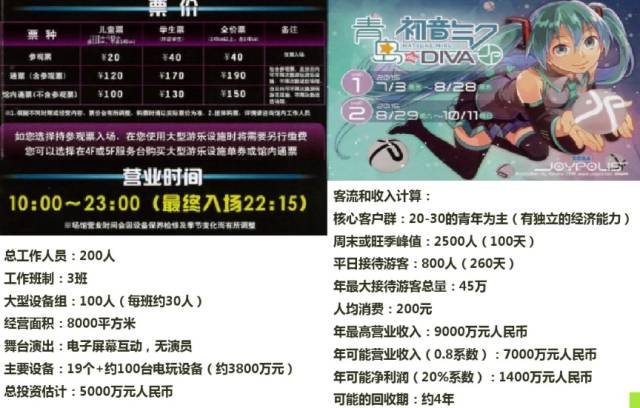
3. Focus on the surrounding value-added, this type is mostly dominated by small/medium game arcades, types of arcade bars, arcade catering, etc. This type of food and beverages account for most of the company's revenue. The game is only a small part of the overall traffic and only accounts for 4% of the overall bar revenue.
V. Arcade game market gap in traditional game games
The arcade game market has the following specialities compared to other game markets:
1. The game focuses on product design.
The appearance, and the cost of the machine are often the first considerations. Even when the project is scheduled to start, hardware and software design are performed separately.
Each project team will have its own hardware designer. The hardware designer will need related knowledge such as electronics, framework, materials, and cost, and the game will be able to do all the same. (The previous company's most powerful hardware designer used to be in the United States.) Do rice cookers.....).
The product design will include conceptual design of the machine platform, frame design of the machine frame, cost estimation, circuit connection, and other related designs.
2. The arcade game product customer is the lobby owner, not the player.
General arcade room to buy machines, the first to see profitability (field measurement data) and costs, the second look at the appearance, the third to see popularity, and finally the game is not fun.
This is why some arcade products in China are bad, but many of them still buy because the players are only coin-operated consumers. However, slightly larger manufacturers will pay more attention to all-round development.
Bad game does not mean not profitable. Good game does not mean that the profit is good. This is a strange point in arcade games.
3. The biggest difference between arcade games and other types of games is the game controller.
Compared to everyone going to the arcade, whether it's playing a shotgun ball, a music machine, or a doll machine, it's because it's hard to play at home.
In many games, just looking at a controller can make you want to play. Because of the special nature of game controllers, controllers other than FTG-type games are difficult to popularize in the home. At the same time, this is also an attractive point for arcade games.
4. The game's sociality will be better and easier to interact with.
After all, it is a offline game. The face-to-face communication is definitely more realistic than the communication in the virtual world. Many games are created for the interaction between players. For example, pat music type games (herotype games of the hardest game), in a large game environment, it is easy to promote players to discuss and communicate with the game.
At the same time, it is common for people to go to the arcade hall to be friends, friends, and generally people who know each other. In an enjoyable gaming environment, it is easier to increase feelings.
At the same time, some of the better players to play will attract people to stop, especially music and dance class.
5. Game design pays more attention to level design.
In arcade games, it is always profitable to rely on game currency. The game rhythm of the first few games must be controlled.
In most games, the first time a player can play a coin is not enough. This is actually the “three-minute rule†of arcade game design. In 3 minutes, players are allowed to appreciate the most essential parts of the game, and the difficulty is controlled by the average player can only play for 3 minutes, so that the balance between profit and level design is optimal.
Under such design criteria, a game, the first level of design, may account for 50% of the entire level design, only to ensure that different types of players can have the best gaming experience. As for the later levels, Is to play for the core players, can play after all is a minority, just want some of the high-end copy of wow before, only 5% of people can hit, the manufacturers will not consume too much energy.
6. The most important test of the product is the site test.
This is completely different from other game tests. A highly completed arcade product will go directly to some connected manufacturers for testing to simulate the normal operation process.
During the testing process, we will examine things such as whether the machine will fail, how profitable the data will be, and how it will be placed in the venue. Usually about 2 or 3 times of field tests can talk about agents and sales.
Six, arcade user groups survey
Users sampled from the top 5 electronic video games and theme parks
1. Sega Game City
2. Tom Bear
3. Nanmeng Palace video game world
4. Xingyou City Game Square
5. Zhengyang Games City
The data source is 2015 Japan's sample report on Chinese arcade market
Daily consumer attributes

Random sampling
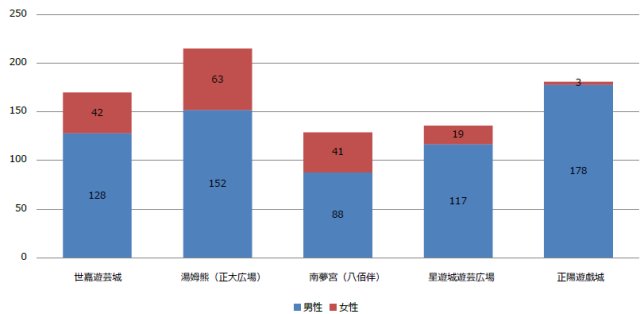
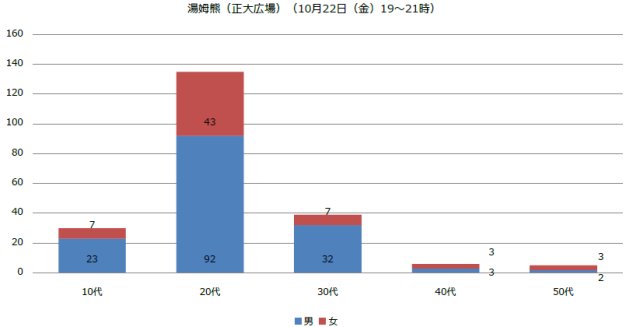
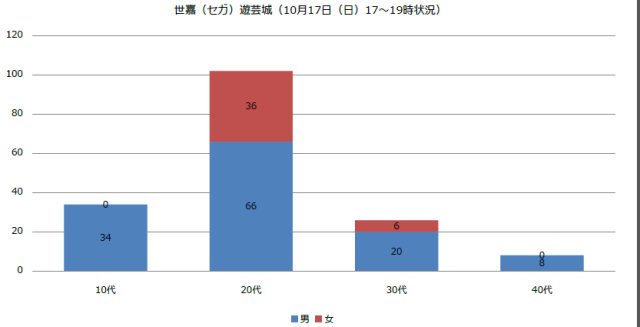
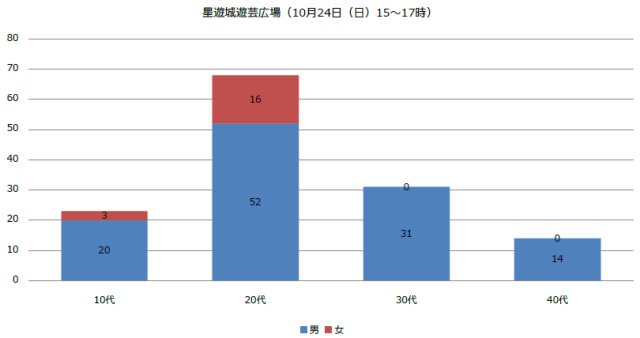

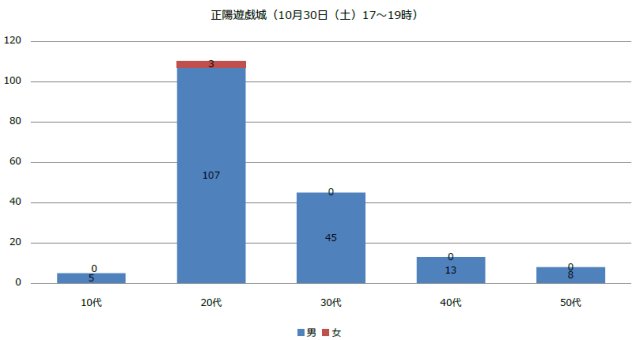
In summary, the following conclusions can be obtained:
1. The main target users of arcade games and video games are 10 to 30-year-old users, of which 20-year-old users are main users, subordinates are 30 years old, and 3 is 10 years old.
2. The distribution of video games mainly focuses on the eastern coast. The single consumption level is about 200 yuan, and the weekend 2 days revenue is 3 times on weekdays.
3. Highly entertaining venues with 5:4 male to female ratios, and the income from these venues is about 30%.
4. The proportion of women in high stores is usually clean and tidy
5. Highly gambling venues, almost no women or ultra-low percentage
Seven Arcade Popular Games Ranking
Sort by revenue:
1 The fishing machine has a gambling nature, and 90% of the stores will be equipped with sub-anti-currencies.
2 All-in-one gambling machine + coin push machine + lottery machine, because they are mostly illegal, so they are in hidden mode, dark field or appear in legitimate adult entertainment centers.
3 Doll Machine, Boyfriend Mode + Hand Remnant One or Two Boards + Rural Workshop Cheap Production + Variety of Variant Doll Machines = Make Money to Soften.
4 Somatosensory design game, please see the following rankings:
4.1 Dance Machine, Easy Promotion
4.2 Musical Game Consoles (Taikouda People, etc.)
4.3 Racing Game (Motorcycle + Formula + Variety of Racing Cars)
4.4 Shooting games are more difficult than racing cars
4.5 Children's games, this article is 1-2.
5 no somatosensory design of the game, that is, the traditional arcade
6 basketball machine, spend less, often fixed, but also fight, skill and physical
Divided from the user group:
The most money to make is coin push machines, fishing talents, and a variety of vouchers (reward incentives)
The most popular among passers-by are basketball players and doll machines, because almost no one will play this every day, but it is very attractive to passers-by. 60% of women spend on doll machines.
What is welcomed by the most popular guests is various kinds of audio games, dancing machines, racing cars, fighting games, and of course, the most profitable gambling games. These types of machines belong to a fixed group from morning to night and occasionally有路人玩(赛车路人相对最多,跳舞机路人相对最少)
最适åˆå®£ä¼ 的机型,跳舞机与音游
从用户群体喜好排åºï¼š
1赛车类
2射击类
3æ ¼æ–—ç±»
4 娃娃机
5儿童游æˆ/赌åšç±»
6模拟体验类(鬼屋,å åœï¼Œæ‹ç…§)
7音ä¹ç±»
解ç¦åŽçš„国内街机市场进化:
1现在的街机厅与电玩城已ç»é€æ¸åŽ»é™¤äº†èµ¤è£¸çš„赌åšæœºç§ï¼Œæ”¹ä¸ºåŠ 大了娃娃机所å çš„é¢ç§¯
2娃娃机与儿童游æˆåŒºåˆå¹¶ï¼Œå¥³æ€§ä¸Žå„¿ç«¥æ¸¸çŽ©åŒºåŸŸåˆå¹¶
3 以体感游æˆï¼Œæ¨¡æ‹Ÿä½“验,VR游æˆä¸ºæ ¸å¿ƒåŒºåŸŸï¼Œä¼ 统街机区域缩å°
4 代券的形å¼æ”¹ä¸ºä½“验积分制或者会员积分制,兑æ¢é“具或纪念å“
8 厕所与é¤é¥®å…¥é¦†
9 电å管ç†
10 éŸ³æ¸¸ï¼Œè·³èˆžåœ¨å®£ä¼ åŒºå±•ç¤º
11 å¢žåŠ åœºé¦†ç”µåå±äº’动游æˆï¼Œå¦‚解密或者寻å®æˆ–者探索
日本街机市场最å—喜欢街机排å:
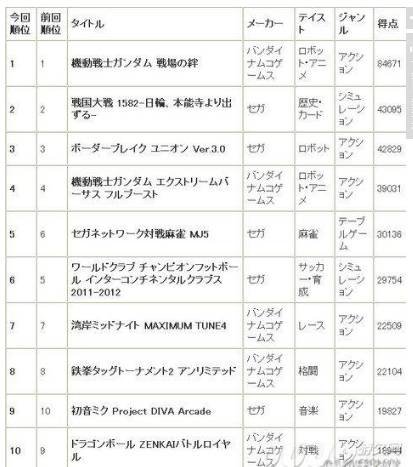
1.《机动战士高达战场之绊》:全方ä½å±å¹•çš„机甲高达控制游æˆï¼ŒVR游æˆ
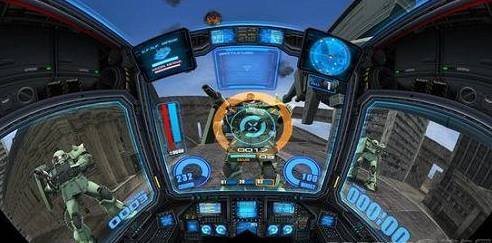
2.《战国大战1582-太阳ã€é€ƒå‡ºæœ¬èƒ½å¯ºã€‹ï¼šæ‰«æå¡ç‰‡å¼è¡—机,投å¸åŽéšæœºèŽ·å–ä¸€å¼ å¡ï¼Œæ‰«æå¡ç‰‡åŽè¿›è¡Œæ¸¸æˆï¼Œå¡ç‰‡åˆ†ä¸ºè§’色å¡ï¼Œè£…备å¡ï¼ŒæŠ€èƒ½å¡ï¼Œå¦‚æžœä¸æ˜¯è§’色å¡ï¼Œè¿›å…¥åˆ™ä¸ºé»˜è®¤è§’色。(æ¤ç±»åœ¨ä¸å›½10-20的儿童市场也åŒæ ·å—æ¬¢è¿Žï¼Œè¯¥æœºå™¨å› ä¸ºæœ‰å®žä½“å¡ï¼Œæ‰€ä»¥å•æ¬¡æ¸¸æˆæ¯”ä¼ ç»Ÿè¡—æœºè¦è´µï¼Œå´ä½ŽäºŽå¤§åž‹ä½“感游æˆ)

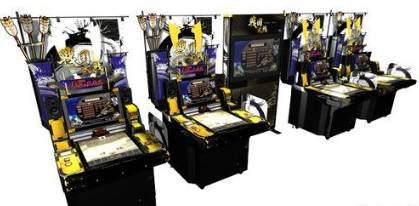

3.《Boroer Break union》:多人åˆä½œå¼å†’险闯关游æˆ
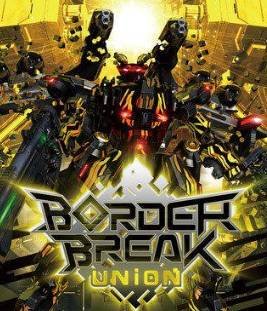

4.《机动战士高达æžé™VS FB》:机甲对战游æˆ
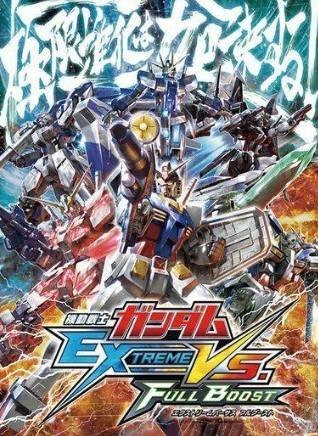
5.《SEGA网络对战麻将MJ5》:多人互动麻将

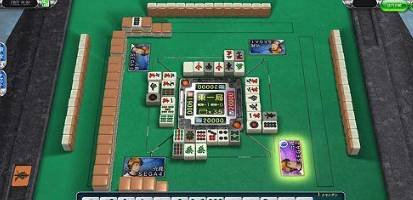
6.WCCF 战术指å—书2011-2012:战术å¡ç‰Œæœº(实体)
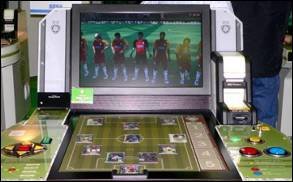
7.《湾岸åˆå¤œæžé€Ÿ4》:多人竞技类赛车游æˆ
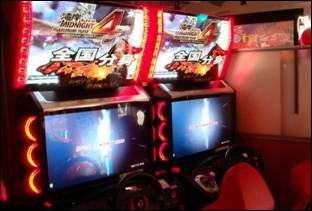
8.ã€Šé‰„æ‹³é”¦æ ‡èµ›2 unlimitedã€‹ï¼šæ ¼æ–—å¯¹æˆ˜æ¸¸æˆ

9.《åˆéŸ³æœªæ¥Project DIVA Arcade》:支æŒå…¨æ¯æŠ•å½±çš„音游
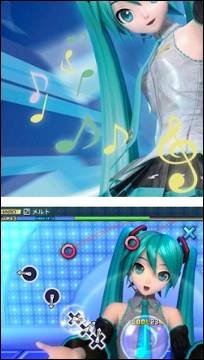
10.《龙ç ZENKAI Battle Royal》:多人剧情å¼æ¸¸æˆ
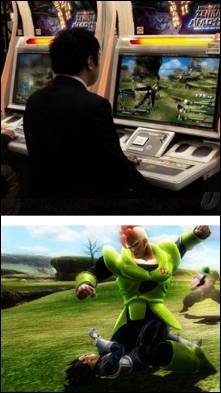
å…«ã€è°ƒç ”总结
1.行业特性匹é…度高:
街机游æˆæ˜¯å”¯ä¸€å…¼æœ‰ä»¥ä¸‹ç‰¹ç‚¹çš„:线下(社交)ã€æ¸¸æˆä¸€æ¬¡æ€§(å¿«é¤)ã€ç”µå游æˆçš„产业与VR综åˆä½“验馆与主题公å›åŒ¹é…度高
2.用户人群é‡å 度较高:
街机与电玩城主è¦ç›®æ ‡ç”¨æˆ·èŒƒå›´ä¸º10到30å²çš„用户,其ä¸20å²çš„用户为主力用户,次级为30å²ï¼Œ3级为10å²
从电玩城分布æ¥çœ‹ä¸»è¦é›†ä¸åœ¨ä¸œéƒ¨æ²¿æµ·ï¼Œå•æ¬¡æ¶ˆè´¹çº§åœ¨200元左å³ï¼Œå‘¨æœ«2天è¥æ”¶ä¸ºå¹³æ—¥3å€ã€‚
娱ä¹æ€§é«˜çš„场馆,男女比例å¯è¾¾5:4,而这些场馆女性所带æ¥çš„收入约å 30%
女性比例高的店通常干净整æ´åœºåœ°æ˜Žäº®
赌åšæ€§é«˜çš„åœºé¦†ï¼Œå‡ ä¹Žæ²¡æœ‰å¥³æ€§æˆ–è€…å 比超低
从易观的VR用户画åƒçœ‹ï¼ŒVR的主力用户特点为:
ä½äºŽä¸œéƒ¨æ²¿æµ·ï¼Œæ”¶å…¥3-8K,本科åŠå…¶ä»¥ä¸‹å¦åŽ†ï¼Œ20-30å²ï¼Œä¹äºŽå°è¯•æ–°é²œäº‹ç‰©ï¼Œå–œæ¬¢3D电影与游æˆï¼Œè¿½æ±‚沉浸与交互,æ¯æ—¥çŽ©30分钟的男性用户
街机产业å˜é©ï¼š
街机游æˆæ ¸å¿ƒç«žäº‰åŠ›åœ¨äºŽï¼š
线下互动
å³æ—¶å¨±ä¹
家里体验ä¸åˆ°æˆ–者ä¸æ–¹ä¾¿ä½“验的内容
而行业的æ¶æ€§ç«žäº‰ï¼Œä¸»æœºï¼Œç¡¬ä»¶çš„飞速å‘展与ä¸å›½å¼ç¦ä»¤çš„å½±å“,使其盈利é¢ä¸‹é™äº†80%
å½±å“回顾:
1.线下互动(ç¦ä»¤é¢å¸ƒåŽé€‚逢网络游æˆçš„高速å‘展,线上互动å–代了线,下,网å§æŽ 夺了大部分的份é¢)
2.å³æ—¶å¨±ä¹(街机游æˆåŽ‚商的æ¶æ€§ç«žäº‰ä½¿å…¶å†…容匮ä¹ï¼Œæ‰‹æœºæ¸¸æˆå´›èµ·æŽ 夺了çŸæ—¶é—´å¨±ä¹éœ€æ±‚的用户)
3.家里体验ä¸åˆ°æˆ–者ä¸æ–¹ä¾¿ä½“验的内容(街机市场èŽé¡åŽï¼Œéƒ½è½¬æˆ˜åˆ°äº†ä¸»æœºæ¸¸æˆå¸‚场,éšç€PS,XBOXç‰é«˜æ€§èƒ½ä¸»æœºï¼Œé«˜å“质的è”网游æˆä¸Žé«˜ä½“验的外设出现,去街机厅的ç†ç”±è¶Šæ¥è¶Šå°‘)
街机产业进化:
1现在的街机厅与电玩城已ç»é€æ¸åŽ»é™¤äº†èµ¤è£¸çš„赌åšæœºç§ï¼Œæ”¹ä¸ºåŠ 大了娃娃机所å çš„é¢ç§¯
2娃娃机与儿童游æˆåŒºåˆå¹¶ï¼Œå¥³æ€§ä¸Žå„¿ç«¥æ¸¸çŽ©åŒºåŸŸåˆå¹¶
3 以体感游æˆï¼Œæ¨¡æ‹Ÿä½“验,VR游æˆä¸ºæ ¸å¿ƒåŒºåŸŸï¼Œä¼ 统街机区域缩å°
4 代券的形å¼æ”¹ä¸ºä½“验积分制或者会员积分制,兑æ¢é“具或纪念å“
8 厕所与é¤é¥®å…¥é¦†
9 电å管ç†
10 éŸ³æ¸¸ï¼Œè·³èˆžåœ¨å®£ä¼ åŒºå±•ç¤º
11 å¢žåŠ åœºé¦†ç”µåå±äº’动游æˆï¼Œå¦‚解密或者寻å®æˆ–者探索
室内休闲娱ä¹ä¸šå‘展趋势:
主题化,个性化与科技体验相结åˆ
主题化:从最åˆè¿½æ±‚规模的大æ‚烩,å‘故事线,主题线的转å˜è¶‹åŠ¿
个性化:从最åˆçš„想è¦ç»™æ¶ˆè´¹è€…的体验需求å‘细化消费者需求转å˜ï¼Œä¾‹å¦‚日本的动漫主题场馆
ç§‘æŠ€å…ƒç´ ï¼šæœ€åˆçš„大型机械,电å设施å‘æ™ºèƒ½åŒ–ï¼Œç§‘æŠ€å…ƒç´ äº’åŠ¨è½¬å˜çš„趋势
游æˆå†…容选择排åºå‚考:
男性:
1赛车类--------------------------------------------竞技属性
2射击类--------------------------------------------ååŒåˆä½œå±žæ€§
3æ ¼æ–—ç±»--------------------------------------------竞技属性
4ååŒå†’险类-------------------------------------the void类,放到多人交互馆
女性:
1娃娃机-------------------------------------------互动å¸å¼•ç”·æ€§
2模拟体验类(鬼屋,å åœï¼Œæ‹ç…§)-----互动èƒè¿«ç”·æ€§
3音ä¹ç±»---------------------------------------------竞技属性
儿童:
1 扫å¡å¼æ¸¸æˆ-----------------------------------集å¡å¹´é¾„段扩充,竞技属性
2 娃娃机------------------------------------------互动èƒè¿«å…¨å¹´é¾„
3 摇摇车å¼è·‘é…·/音ä¹-------------------------ååŒ(旋转木马,å°ç«è½¦)或沉浸属性
街机行业获得的å¯ç¤ºï¼š
1.环境è¦æ±‚高,干净,整æ´ï¼Œç™½å¤©æ˜Žäº®ï¼Œæ™šä¸Šç§‘技,有主题/情调
2.娱ä¹å†…容选择上é‡è§†å‰3分钟,å•æœºæ¸¸æˆæ—¶é•¿æŽ§åˆ¶åœ¨3-5分钟
3.观影内容éµå¾ªå½±é™¢2周法则以åŠå½±ç‰‡æ›´æ–°æ³•åˆ™ï¼Œæ›´æ¢å†…容。2周法则:影院一般会在2周更æ¢å½±ç‰‡ï¼Œå—欢迎的影片在间隔2周åŽé‡æ–°ä¸Šçº¿1周,éµå¾ª1新片多è€ç‰‡çš„åŽŸåˆ™ï¼Œå› ä¸ºVR观影内容时间çŸï¼Œè€ƒè™‘缩çŸæ›´æ–°æ—¶é—´ä¸Žå¢žåŠ 新片数é‡ï¼Œå¯æŒ‰ç…§å½±ç‰‡é•¿çŸåˆ’分微电影,与电影,微电影控制在15分钟以内。(æ•°æ®é‡‡æ ·æ¥æºäºŽè…¾è®¯å¾®ç”µå½±è°ƒç ”与3Dç”µå½±è°ƒç ”æŠ¥å‘Š)
4.增值å¯è´©å–é¤é¥®ï¼Œç¡¬ä»¶ï¼Œä½Žä»·çºªå¿µå“,高价或者特殊纪念å“放到娃娃机或者积分兑æ¢é‡Œé¢ã€‚(娃娃机åšé«˜çˆ†å‘收入,积分åšé•¿çº¿æ”¶å…¥ã€‚)
5.观影注é‡éšç§æ€§ï¼Œè¿‡åº¦æ›´å¤šçš„女性以åŠæˆäººç”¨æˆ·ï¼Œå¦‚果是时间收费,最好åšè®¡æ—¶å™¨
6.馆区最好划分明确,观影休闲最好ä¿æŒå®‰é™ï¼Œå•æœºåŠ¨æ„Ÿï¼Œäº¤äº’游æˆæ‚ 闲缓和体验带æ¥çš„刺激冲击脱离沉浸,安é™-动感-安é™
7.å› ä¸ºè¡Œä¸šèžåˆåº¦é«˜ï¼Œå¯ä¸Žå…¶è¿›è¡Œäº¤å‰åˆä½œ
8.å¯å¢žåŠ 场馆电åå±äº’动游æˆï¼Œå¦‚解密或者寻å®æˆ–者探索,为主调å让用户自主寻访全馆,é™ä½Žå¼•å¯¼æˆæœ¬
9.以体感游æˆï¼Œæ¨¡æ‹Ÿä½“验,VR游æˆä¸ºæ ¸å¿ƒåŒºåŸŸï¼Œé€šè¿‡éŸ³æ¸¸ï¼Œè·³èˆžåœ¨å¢žåŠ çƒåº¦ï¼Œæ¸¸æˆåŒºåŸŸæŒ‰ç…§çƒåº¦åˆ†å‰²ç”·æ€§ï¼Œå¥³æ€§ï¼Œå„¿ç«¥æ¸¸æˆåŒºåŸŸ
10.å•æœºæ¸¸æˆä½“验区,拉伸与家用机的区别,从外设,æœåŠ¡çš„角度出å‘,é‡è§†æ¡†ä½“è®¾è®¡å¢žåŠ ä»£å…¥ã€‚
11.VR体验馆与主题公å›å¾€å¾€æ˜¯å¤šäººç»“ä¼´åŒæ¸¸ï¼Œä»¥æ´»åŠ¨çš„å½¢å¼ï¼Œå¼•å¯¼çº¿ä¸‹äº¤äº’,游æˆä½“验é…置竞技与ååŒå†…容。
Introduction
SCOTECH manufactures a full range of pole mounted distribution transformers, they are mounted on electrical service pole at the level of overhead cables, normally oil immersed type and used in extensive rural area, they are compact in size and small in mass so that it is easy for installation, far away from the ground level makes it inaccessible, reducing the risk of injury to animals and people and minimize the vandalism.
Scope of supply
Primary voltage up to 35KV
Rated power: up to 500KVA
Installation: pole mounted
Standards
SCOTECH`s three phase distribution transformers are designed and manufactured in accordance with all major international standards (IEC, ANSI, UL, etc.)
Why SCOTECH
Long history- Focus on transformer manufacturing since 1934.
Technical support – 134 engineers stand by for you 24/7.
Manufacturing-advanced production and testing equipment, strict QA system.
Perfect service-The complete customer service package (from quotation to energization).
Pole Transformer,Pole Mounted Transformer,3 Phase Pole Mounted Transformer,Single Phase Pole Mounted Transformer
Jiangshan Scotech Electrical Co.,Ltd , https://www.scotech.com